Fish, Fish, Fish! What’s All the Fuss About?
By Dave Bolha, Wisconsin DNR water quality biologist
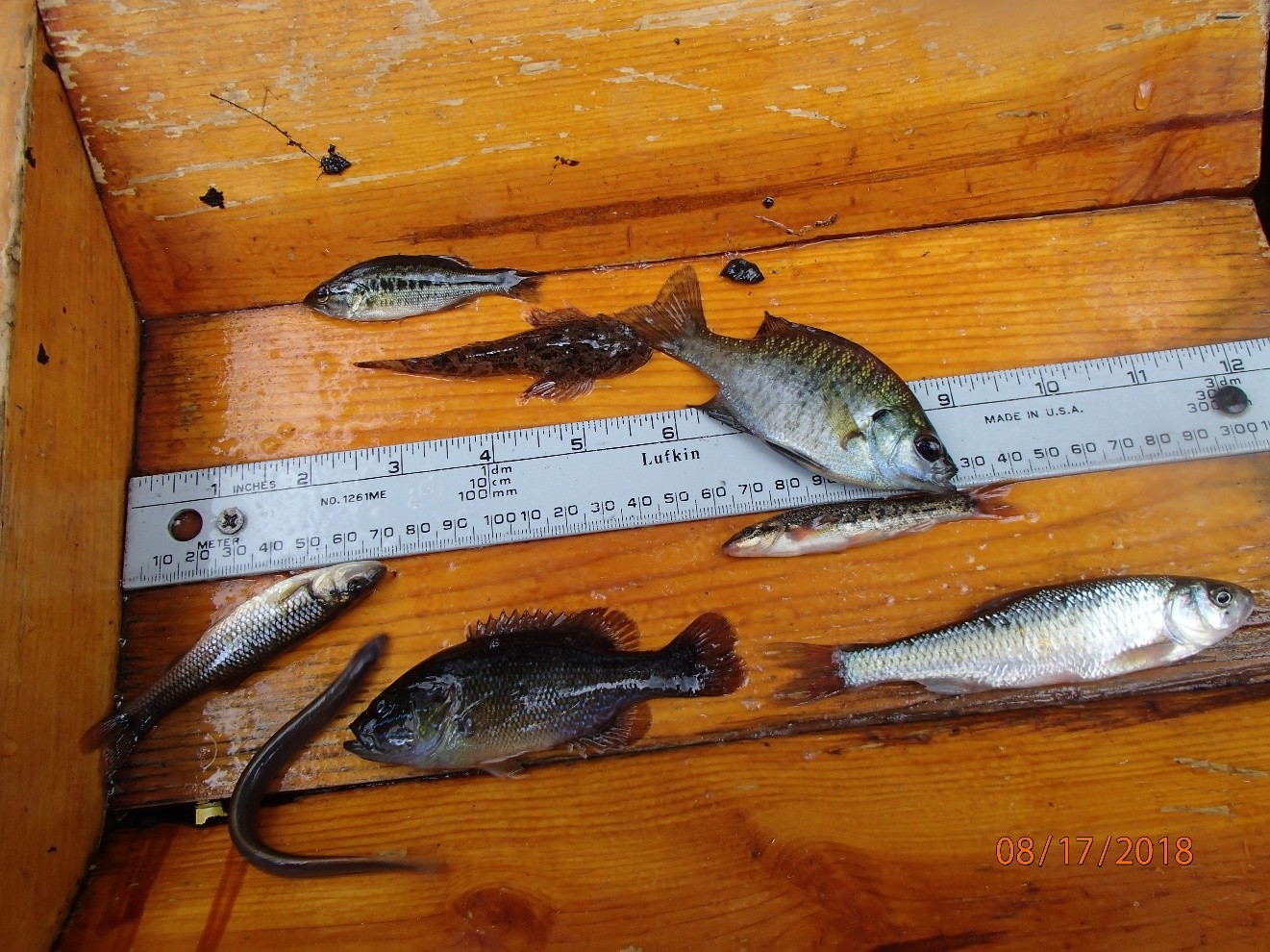
Diversity of a fish community found in streams across Wisconsin. Photo by Dave Bolha.
Why are fish such a large part of our Wisconsin culture and why do we spend so much time getting to know them? The simple answer is – they are just amazing! Plus, they live in this mysterious underwater world that is dynamic and always changing.
Wisconsin is blessed with an abundance of water. Our state is home to 15,000 lakes and more than 84,000 miles of flowing rivers and streams, not to mention Wisconsin’s nearly 6 million acres of wetlands, which often are home to rare fish communities. Wisconsin’s streams and rivers range in size from a small trickle that can be stepped across, to the mighty Mississippi River that I couldn’t even swim across. The same diversity of waters can be found in our lakes. Inland lakes range in size from small ponds of just a few acres to Lake Winnebago at nearly 132,000 acres, and they range in depths of just a few feet deep to more than 200 feet deep in Big Green Lake in Green Lake County. Then, of course, there are our two Great Lakes, Michigan and Superior, at over 900 feet and 1,300 feet deep, respectively. Fish can be found in every variety of Wisconsin’s wetlands, lakes, rivers and streams. They come in many different shapes and sizes, with some making you wonder if they are a fish or some type of prehistoric dinosaur.
But why do we care? A healthy fish community provides the balance necessary between the layers of life within lakes and rivers. Each species of fish fills a critical role within the balanced ecosystem, some roles which are known and some we have yet to discover.
Some of the best things we love about our water is witnessing a healthy, balanced ecosystem at work. Fish provide a critical part of the aquatic life communities, often forming a link between the energy inputs into the water and energy exports out of the water. For example, a fish may consume a large number of grasshoppers that fall into a stream each summer (i.e. energy input), and that same fish may end up being an osprey’s dinner (i.e. energy output). Who doesn’t love seeing an osprey swoop down to the lake’s surface and fly off with a juvenile walleye? Ok, maybe that is a bad example, but you get the point. Who hasn’t watched a Great Blue Heron stalk his prey on the edge of a river and then swallow a 3-inch bluegill? A beautiful ecosystem at work.
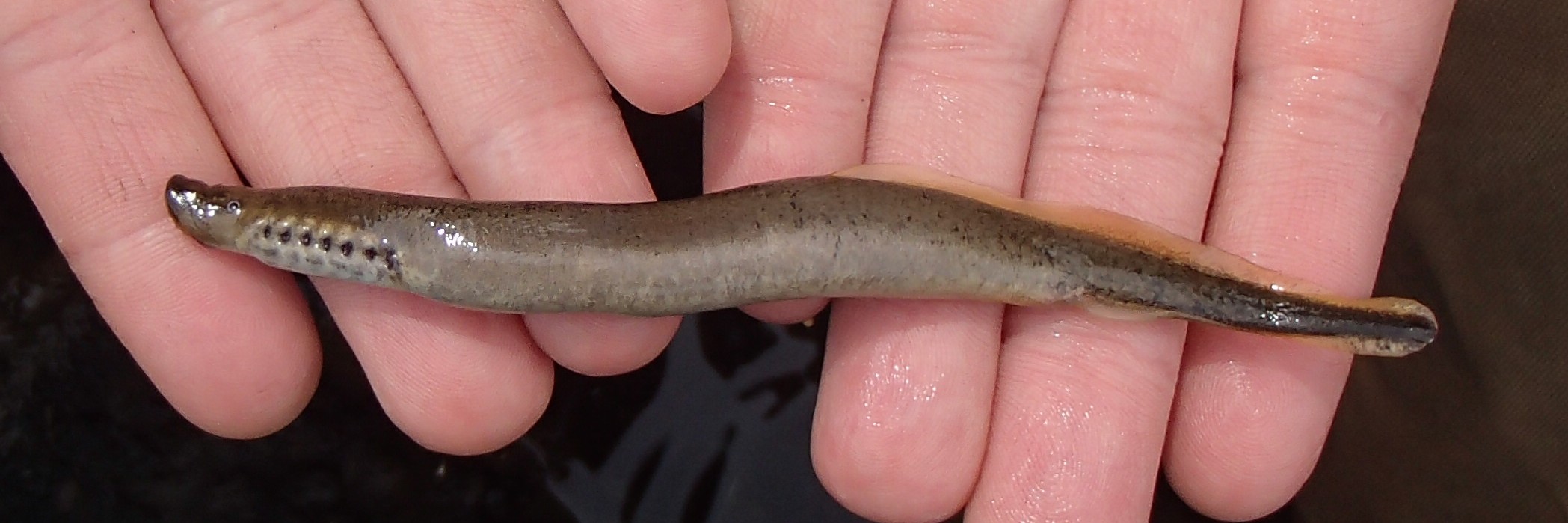
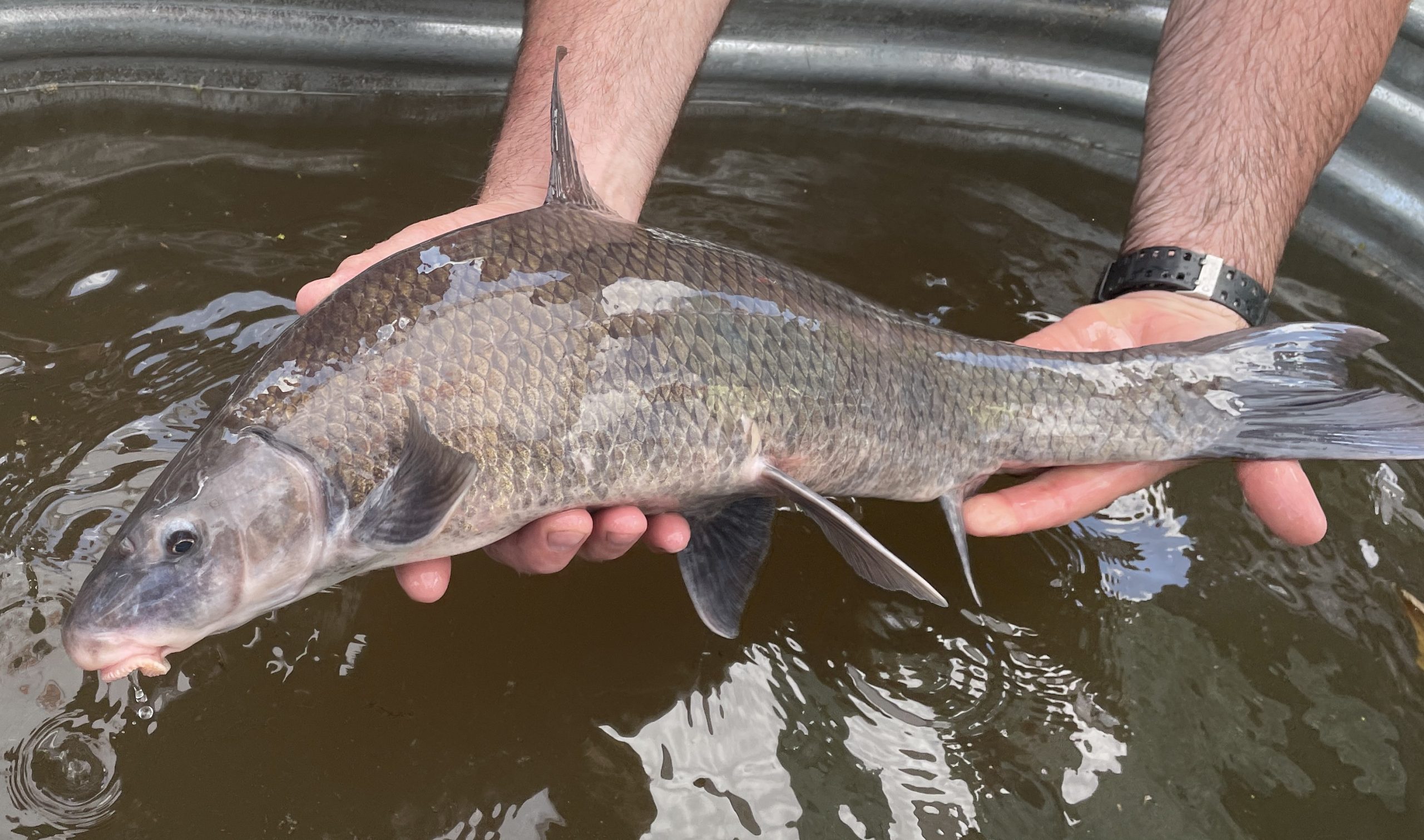
(Top to Bottom) A Native Lamprey and Blue Sucker. Photo by Dave Bolha.
The needs for fish to thrive have been the root of many of our water quality standards for streams and lakes in Wisconsin. Fish breathe oxygen just like us, but their oxygen is dissolved in water and measured as milligrams/liter. For most rivers and streams without trout, our water quality standard for dissolved oxygen is 5 mg/L. For trout waters, the year-round standard is 6 mg/L, with 7 mg/L required during spawning periods. We also have standards for the water temperature of our streams and rivers because certain fish need colder water and some prefer warmer. Thank you for all the volunteers out there collecting dissolved oxygen and water temperature data for WAV!
As of 1999, 147 native species of fish (i.e. here before European settlement) and 14 established non-native species of fish are recognized in Wisconsin (Lyons et. al. 2000). Some fish serve the role of top predator in lakes and warm large rivers, such as Northern Pike, Flathead Catfish, and Smallmouth Bass. Some fish prefer the coldest water in small streams, such as Brook Trout and Mottled Sculpin.
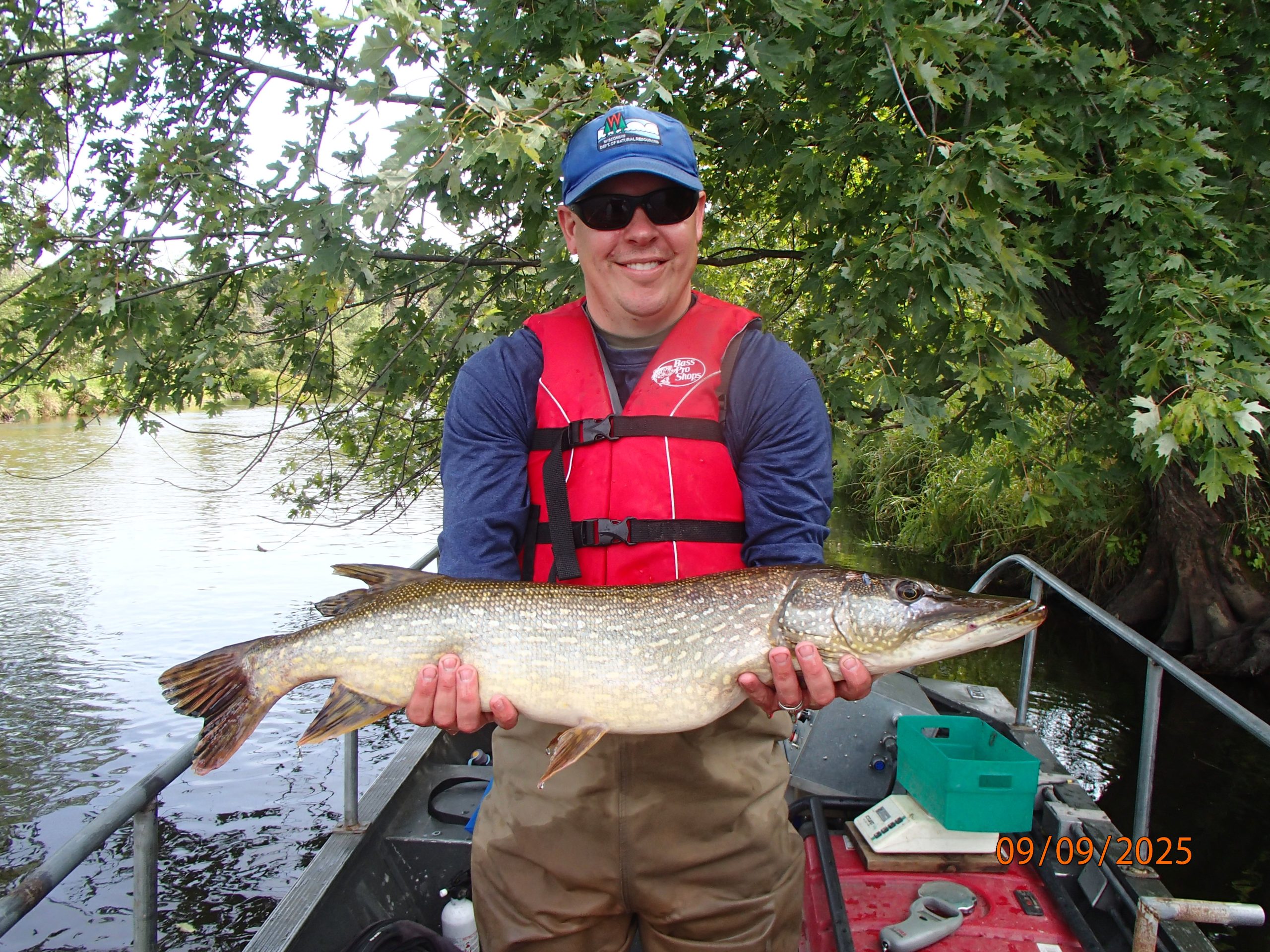
Dave Bolha holding a Northern Pike. Photo by Dave Bolha.
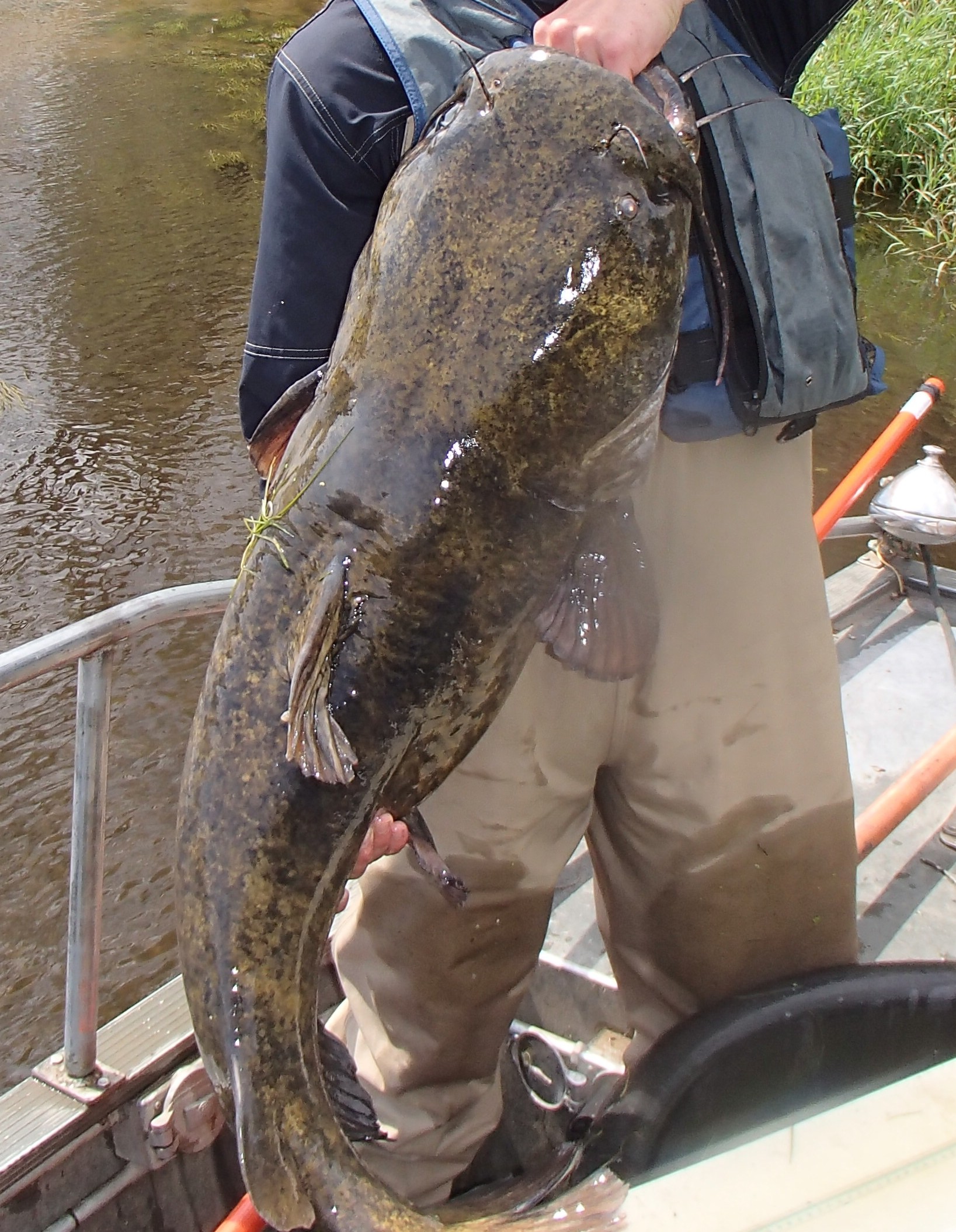
Flathead Catfish. Photo by Dave Bolha.
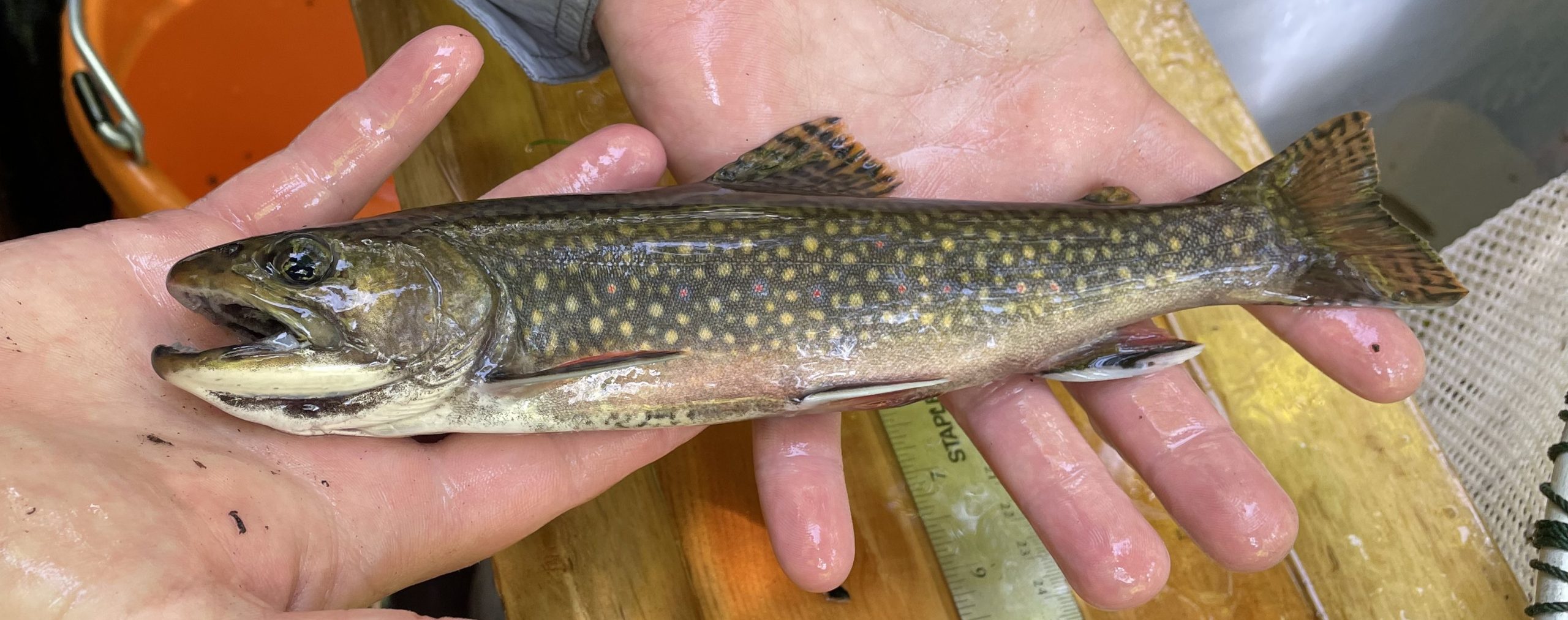
Brook Trout. Photo by Dave Bolha.
Species Highlight: Mottled Sculpin
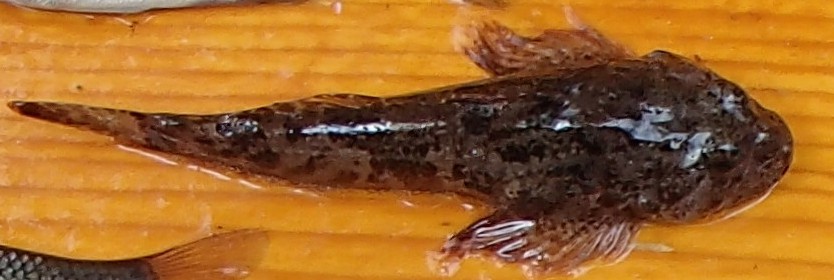
Mottled Sculpin. Photo by Dave Bolha.
Mottled Sculpin are a smaller fish (max length ~5 inches) that feed on aquatic insects in fast-flowing, high-oxygen streams. They have a specialized head shape and fins used to hold themselves amongst the rocks. Fun fact: a Mottled Sculpin female lays her eggs in a nest prepared by a male by flipping upside down and attaching the eggs to the underside of rocks.
One of the coolest roles fish play are the hosts for freshwater mussels, and nearly half of our freshwater mussels are listed as threatened or endangered in Wisconsin. Some mussels are very specific about which fish species they use as a host fish. For example, the state endangered Snuffbox mussel uses Logperch as its main host fish. Dead mussel shells can also serve as habitat for smaller fish, like this Johnny Darter fish protecting its eggs.
You can learn more about our cool freshwater mussels at Wisconsin Mussel Monitoring Program | | Wisconsin DNR.
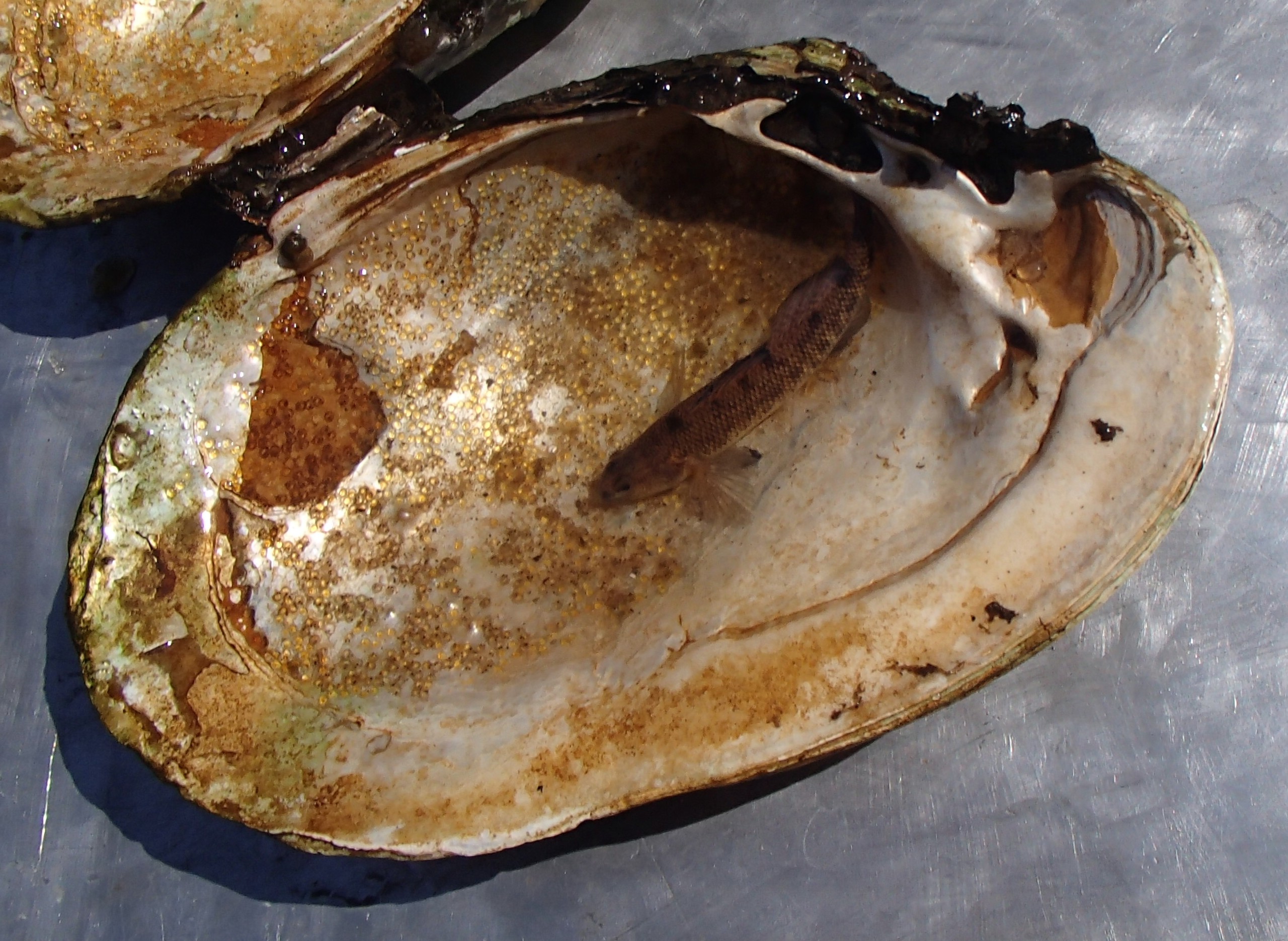
Johnny Darter fish in a dead mussel shell. Photo by Dave Bolha.
Fish are Part of Wisconsin’s Economic and Cultural Heritage
Here are a few of the more practical reasons fish are important to care about. The Great Lakes Fishery Commission recently reported that the Great Lakes fishery is worth more than $5.1 billion annually. In 2020, the Fox-Wolf Watershed Alliance estimated that the recreational angling in Lake Winnebago and its Pool Lakes generate over $297 million annually across a five-county region. In 2023, Wisconsin’s Office of Outdoor Recreation estimated that boating and fishing generated $928 million for the economy.
Some of our greatest pastimes and traditions involve fish. Watching a bobber while fishing for bluegills off a lake dock is a summer highlight for many people, young and old. The sight of fishing boats stacked together in the Wolf River during the annual Walleye and White Bass spring spawning runs is a tradition rich in history. The Menominee Tribe, residents of Wisconsin for millenia, relied on Lake Sturgeon as an important food source to survive the harsh winters and have incorporated the fish into their religious practices and creation story. Lake Sturgeon can grow to greater than 200 pounds and live longer than 100 years! The sturgeon continues to be an important fish tied to Wisconsin culture and traditions – the Lake Winnebago system Lake Sturgeon spearing season dates back to the early 1930s and draws more than 13,000 spearers to the Fox Valley area each February.
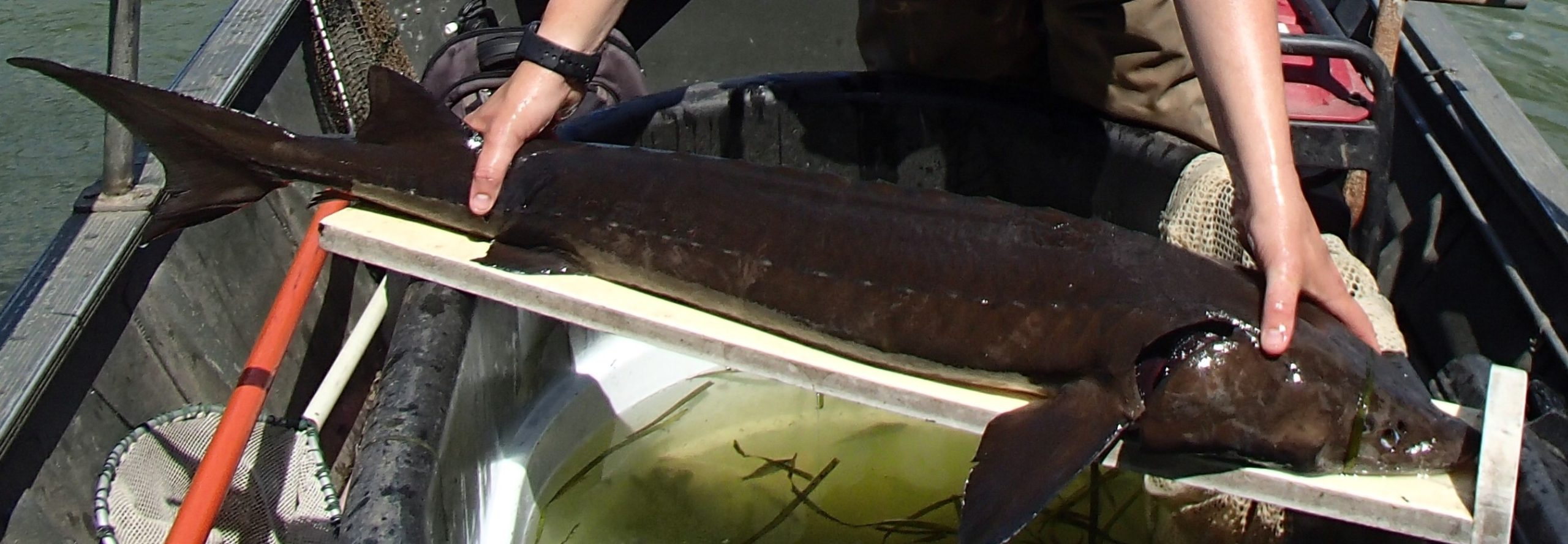
Lake Sturgeon. Photo by Dave Bolha.
I can’t tell you how many times, while standing next to a bridge, someone has told me “I didn’t think there were any fish in there,” and they are intrigued to see the bucket full of fish we collected during our surveys. The next time you stop at a road bridge or culvert, remember to appreciate the complex and special fish that make this spot their home.